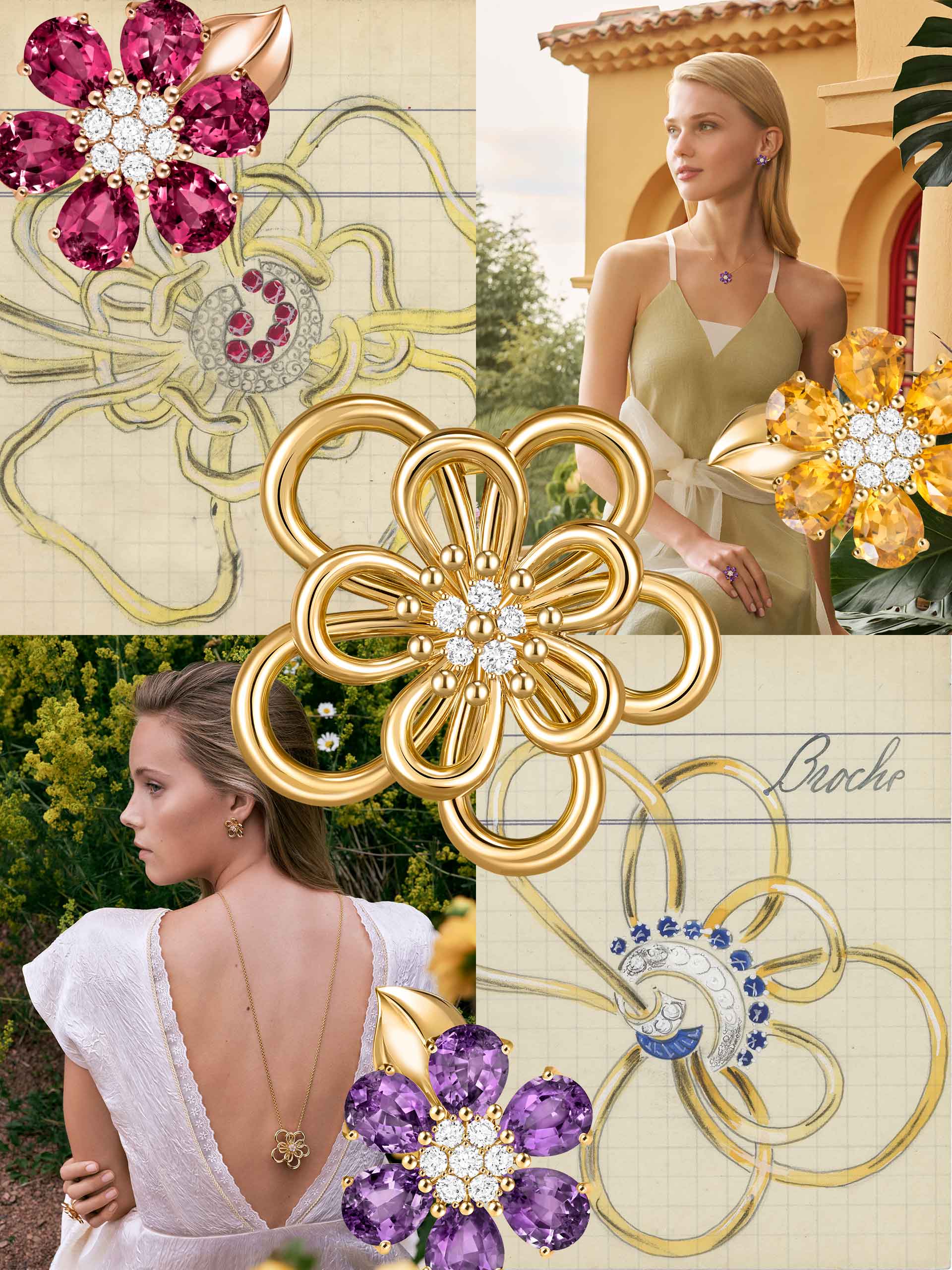
I never imagined I’d become a nature lover. But this past July, somewhere between fragrant rose beds and a particularly picturesque row of foxgloves in Scotland, it happened. Courtesy of Van Cleef & Arpels—the French jewellery maison that has mastered the art of making flowers eternal—I was invited to explore its exuberant Flora universe in the Walled Garden of Dumfries House. The experience was unexpectedly stirring: a rare blend of royal horticulture and high jewellery splendour that left even this diamond devotee enchanted.
The occasion? A poetic unveiling of Van Cleef & Arpels’s latest floral-themed jewellery lines—Fleurs d’Hawaï and Flowerlace—set against the pastoral majesty of the King’s Scottish estate. The event brought together new creations, archival icons, and a palpable reverence for both nature and craftsmanship.
According to Catherine Rénier, CEO of Van Cleef & Arpels, that interplay—between heritage and innovation—is entirely intentional. “I think you need to know exactly who you are,” she says, “and then create and explore within that field of expression—always referencing what’s come before, either as inspiration or as a starting point.” At Van Cleef & Arpels, that often means delving into its patrimony collection to ignite new ideas. “Sometimes it just takes one archival piece to spark an idea: ‘What if we reimagined this?’ or ‘What if we revisited gold ribbon and floral motifs?’”
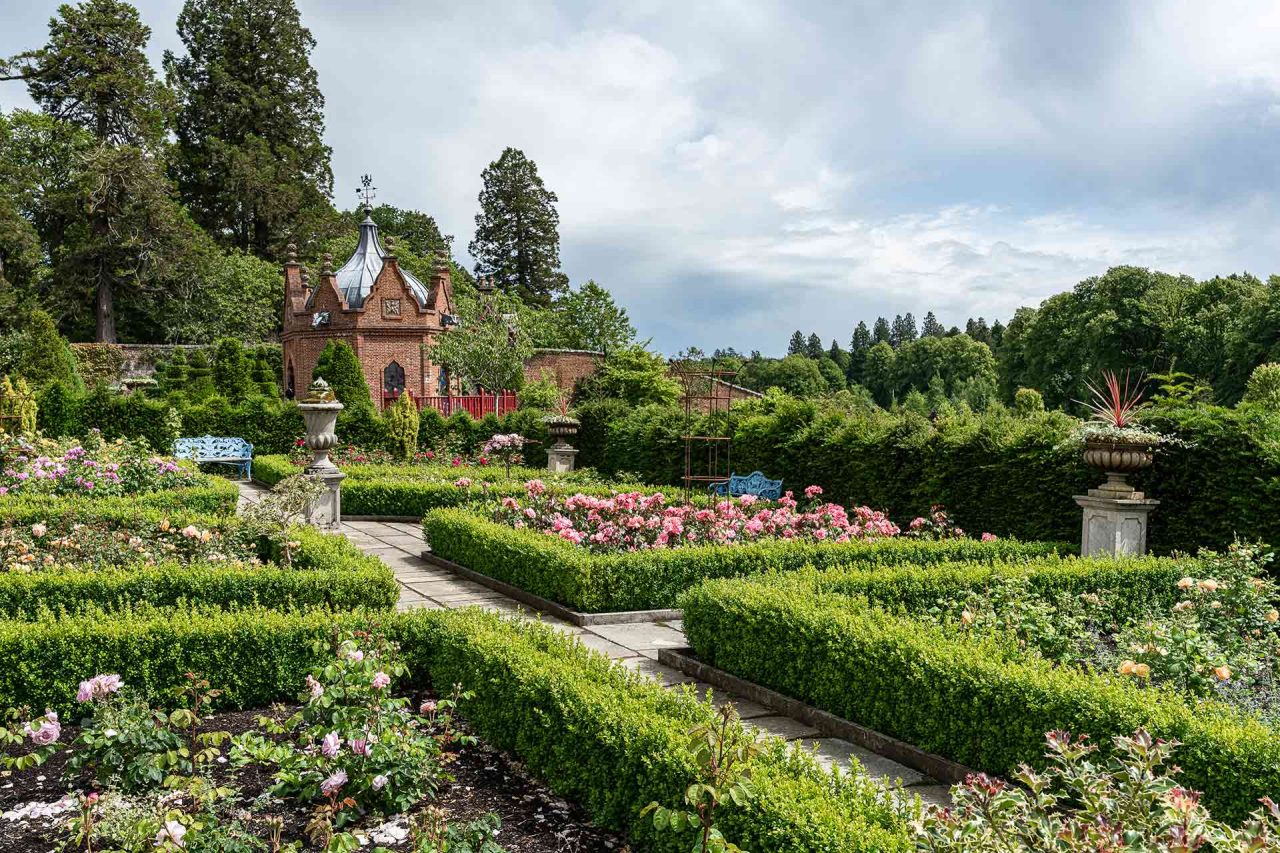
Fleurs d’Hawaï, with its joyful, colourful gemstone petals and lifelike gold leaves, is a direct evolution of a 1930s design. “This time, we used pear-shaped stones, giving the flower a more elongated, dynamic look,” Rénier explains. The gemstones are undoubtedly the stars here: citrine, amethyst, aquamarine, peridot and rhodolite bloom in a dazzling rainbow of colour. Meanwhile, gold beads and diamonds bring luminosity and movement to each blossom, echoing elements of Flowerlace—the maison’s more abstract floral line that channels whimsy through sculptural volume and asymmetry.


The interplay between realism and abstraction is what makes these new collections so compelling. Where Fleurs d’Hawaï revels in organic exuberance, Flowerlace takes liberty with form—a ribbon–flower hybrid first conceived in 1937, now reimagined into modern silhouettes that feel both bold and ethereal on the body. “It’s whimsical, voluminous, and playful, yet still refined,” says Rénier. “Inspired by a 1937 clip, it represents a totally different design language. That’s what keeps our floral universe fresh.”


The new pieces were presented alongside heritage creations that remain astonishing in both concept and execution. Among them: the legendary Mystery Set Peony clip that once belonged to Her Royal Highness Princess Fawzia of Egypt—one of my all-time favourites—was on display, its luscious ruby petals framed by brilliant diamond leaves glinting in the Ayrshire sunshine. Then there was a trio of Silhouette clips from 1937—abstract floral forms rendered in sweeping yellow gold lines. Seeing them up close, outside the confines of a vitrined boutique and nestled within the grandeur of Dumfries House, added unexpected emotional resonance.
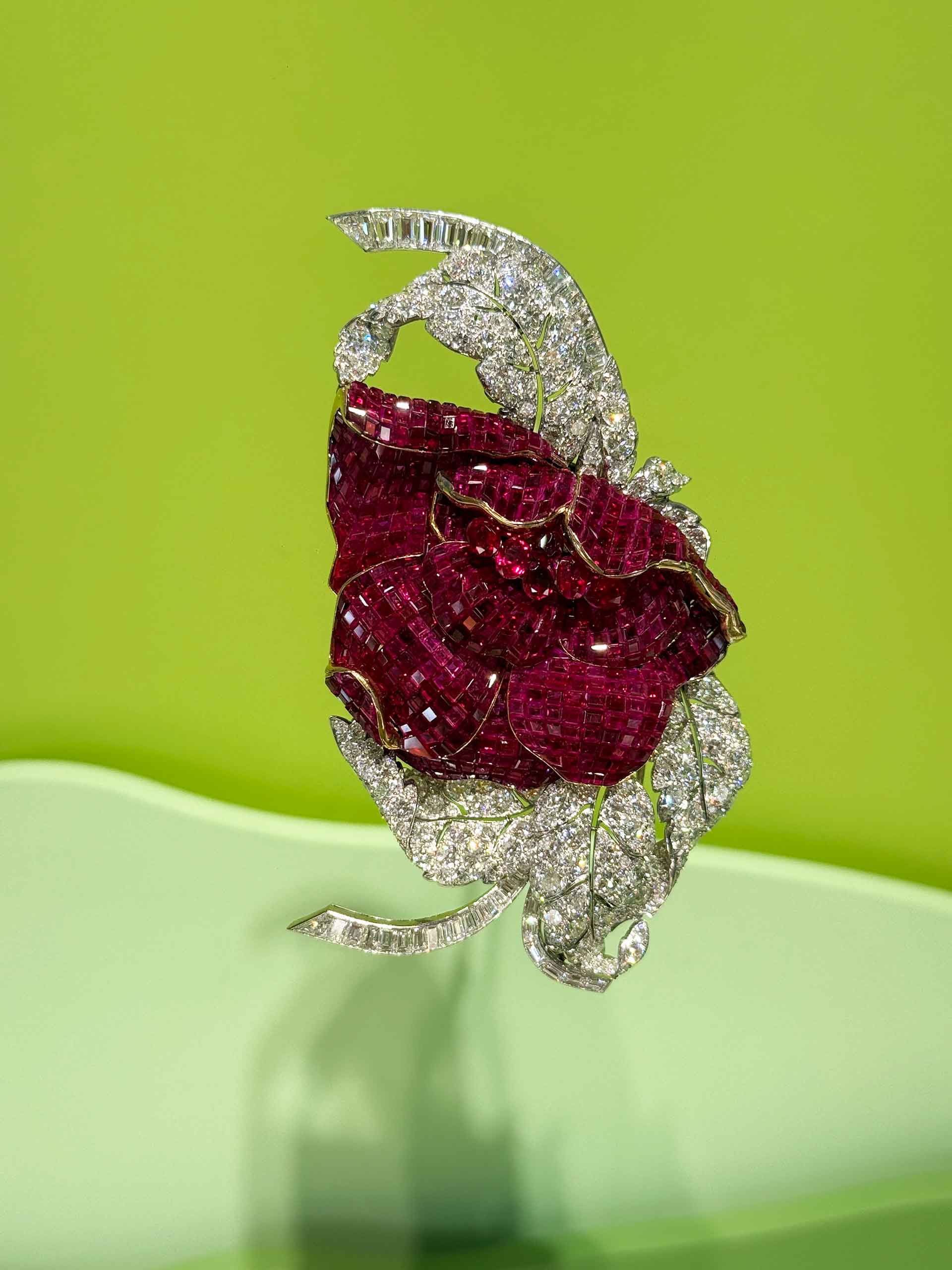
“Jewellery is more than an object; it is a connection,” Rénier reflects. “You might first be drawn to a ring because it’s beautiful. But when you learn its story—how it’s inspired by a 1930s piece, how each stone was carefully sourced and paired, how the craftsmanship brings realism or abstraction—it deepens your appreciation.”
At Van Cleef & Arpels, beauty is never superficial. Everything is engineered for comfort, movement and emotional engagement. “It’s not just about beauty,” she adds. “It’s about how the piece lives on the body.” From the curve of a leaf to the hidden gold setting behind a stone, every detail is prototyped and perfected. No petal is accidental.
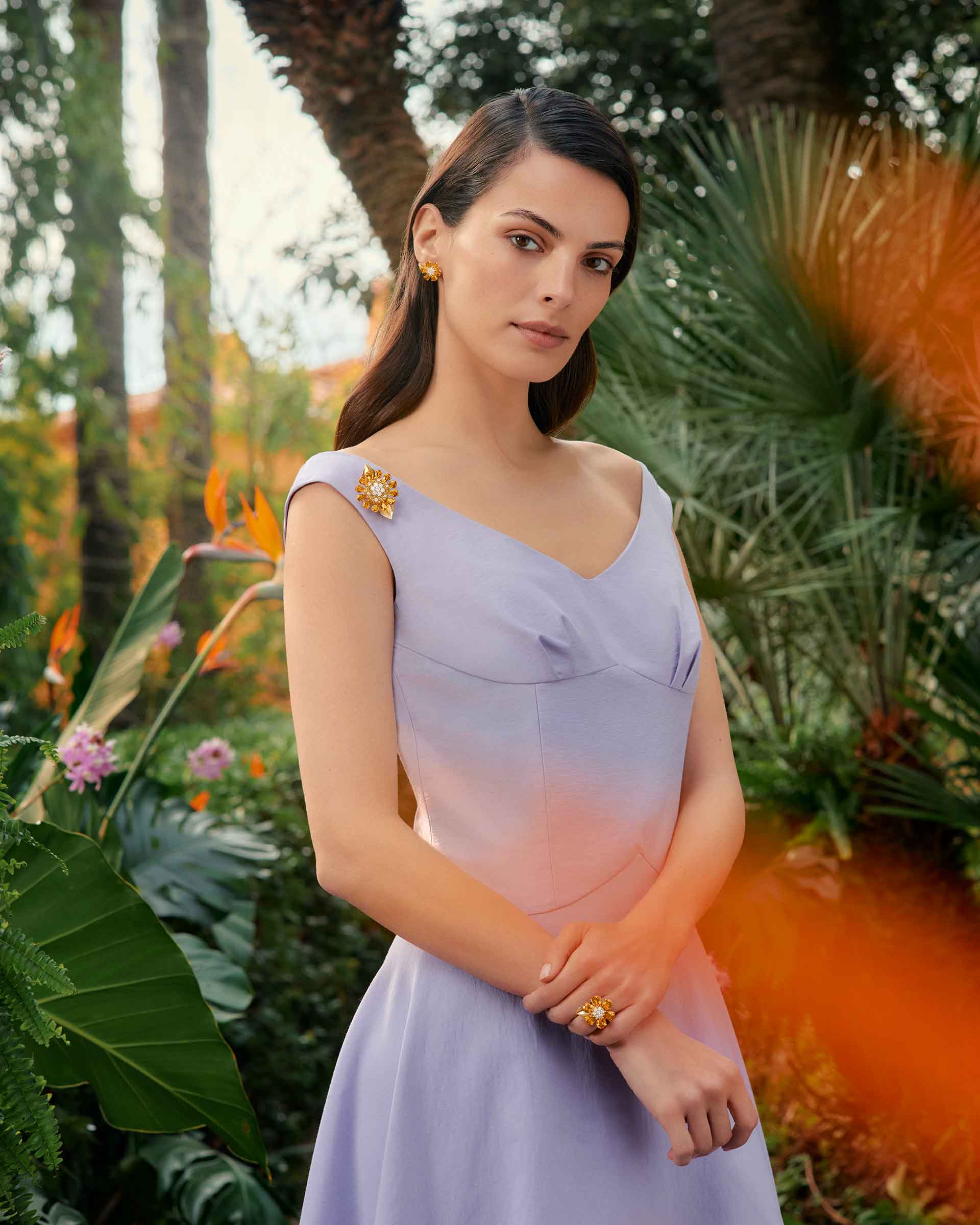
That commitment to craft is part of the maison’s sustainable philosophy. Through initiatives like L’École, School of Jewelry Arts—which Van Cleef & Arpels launched in 2012—the brand opens up the world of jewellery to the public, offering exhibitions, classes, books and podcasts. “We believe that to preserve know-how, you must make it appealing—both to young artisans and curious clients,” says Rénier. “That means storytelling, access and education.”
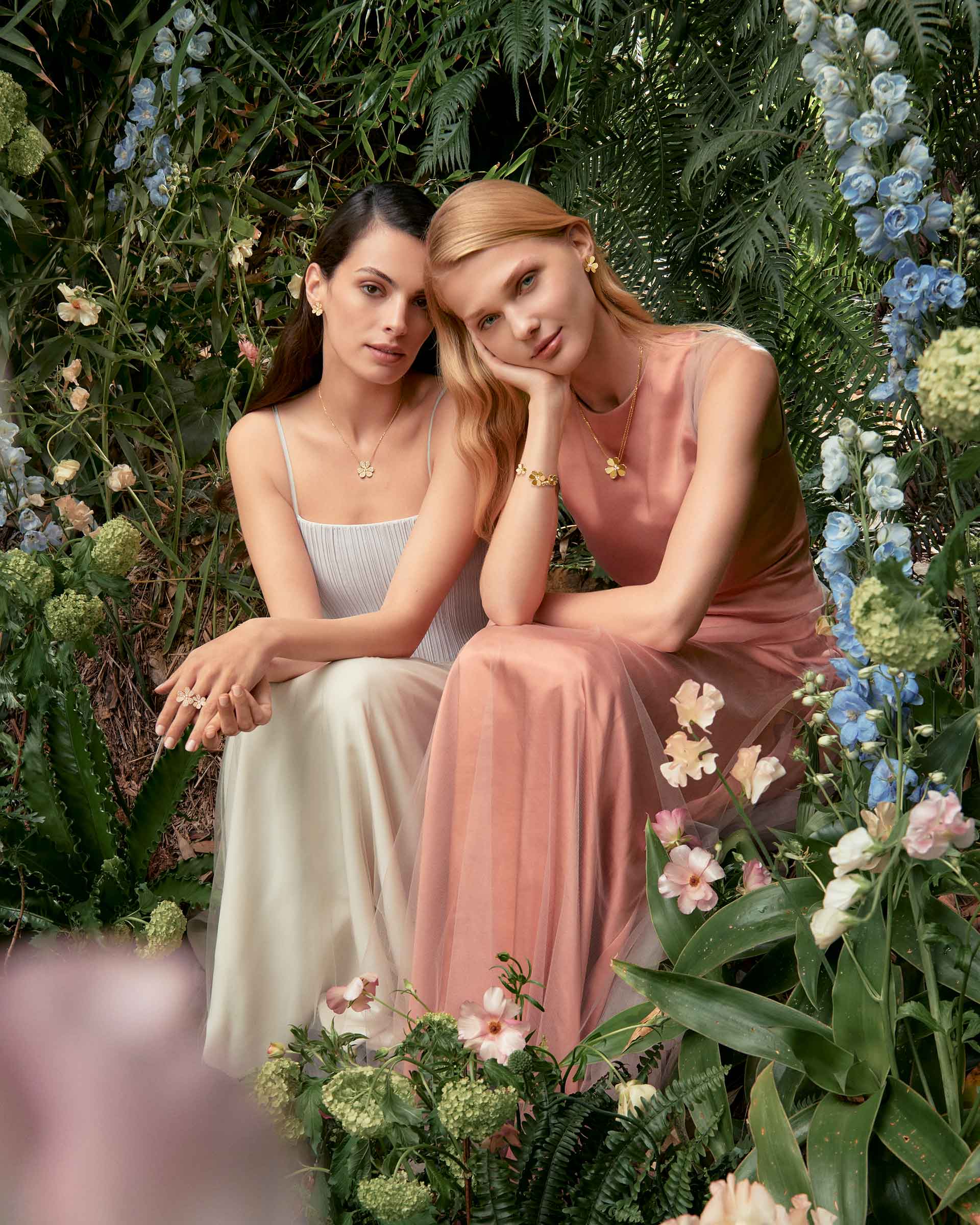
It’s a fitting philosophy in the context of Dumfries House itself, which was on the brink of being sold and its extraordinary Chippendale collection scattered before The King’s Foundation intervened in 2007. Thanks to that vision—and the support of like-minded partners such as Van Cleef & Arpels—the house now stands not only as a preserved heritage site but as a living, working estate dedicated to craft, community and conservation.
The maison has played an active role in the restoration of the grounds, most notably through the sponsorship of the Van Cleef & Arpels Rose Garden—a stunning addition to the Walled Garden that celebrates both botanical and artisanal beauty. Officially opened and named by King Charles in 2023, the rose garden is a symbol of shared values between the crown and the maison: an enduring commitment to heritage, nature and the transmission of savoir-faire across generations.
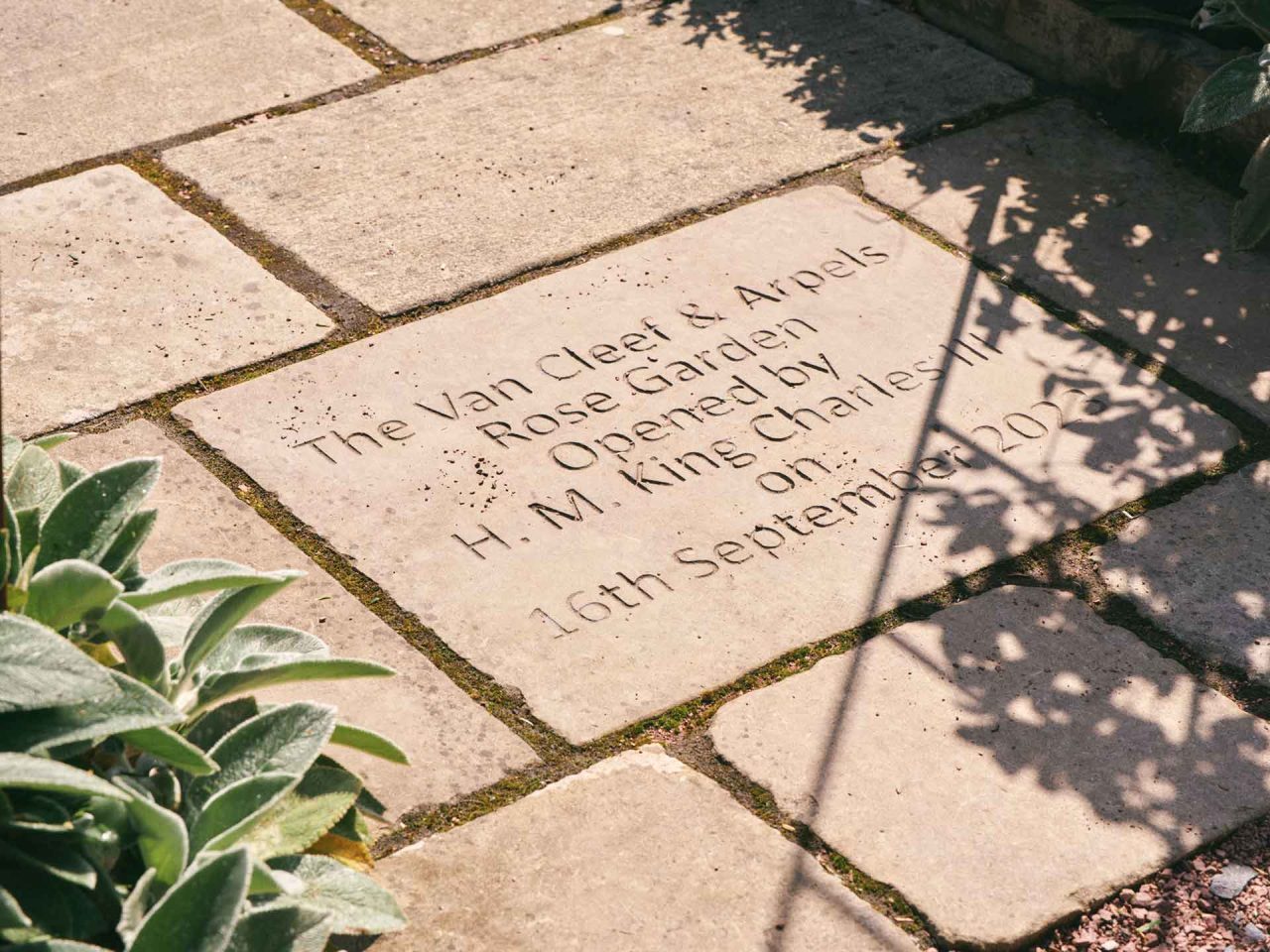
The parallel between maison and monarchy is striking: both rooted in tradition, both driven by preservation, both committed to shaping a future where craftsmanship endures. “We stay relevant by being consistent,” Rénier says. “Trends come and go, but our jewellery is made to last for decades—even generations.”
So yes, it seems Van Cleef & Arpels has made a garden enthusiast out of me. It has shown me that a flower—whether set in gold or blooming in a Scottish walled garden—can be more than ornamental. It can be a story, a memory, a legacy.
This story first appeared on GRAZIA Singapore.
READ MORE
Van Cleef & Arpels’ ‘Precious Jewels Telling Time’ Exhibition Showcases Its History in Watchmaking
Backstory: Van Cleef & Arpels Lady Arpels Brise d’Été Watch
Van Cleef & Arpels at Watches & Wonders 2025: A Love Letter to Paris, Its Birth City
